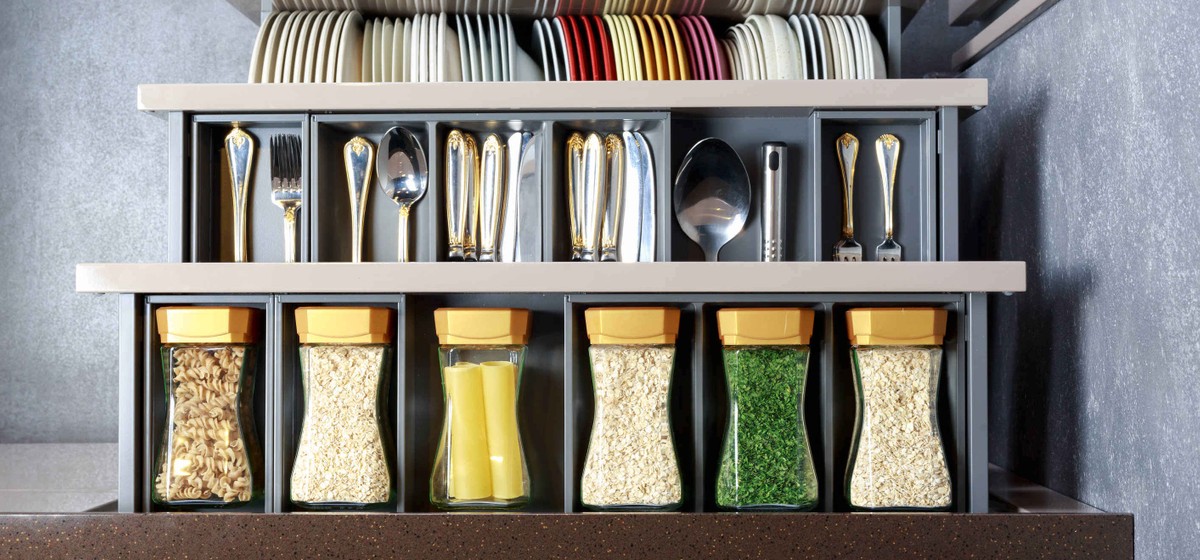How to Stock An Allergy-Friendly Kitchen




Did you know that 32 million Americans have food allergies? 1 in 10 adults and 1 in 13 children are living with a food allergy. It’s not easy to live with food allergies, but it’s especially challenging during the COVID-19 pandemic. Unless you’re living with food allergies, or caring for someone who is, you may not fully understand the impact of living with dietary restrictions. Luckily, with more awareness about food allergies, intolerances, and dietary restrictions, it is now much easier to navigate the world with food allergies, but it is essential to take necessary precautions.
This is especially true when stocking an allergy-friendly kitchen, see below for tips and suggestions to help you plan and stock accordingly:

When first diagnosed with a food allergy, you may be slightly overwhelmed by the list of foods you must avoid. Many common allergens have numerous pseudonyms to look out for on a Nutrition Facts label. If you’re unsure of other names for your allergen, consult your allergist or dietitian specializing in food allergies. Keep in mind that you should check food labels at every shopping trip because companies can change their recipe without alerting consumers.
First, scan the ingredient list for your allergens. Check if the ingredient list has a “Contains” statement. Since 2006, the Food and Drug Administration requires that foods with a top 8 allergen have a “contains” statement next to the ingredient list. The major allergens are milk, eggs, peanuts, tree nuts, wheat, soy, shellfish, and fish. For example, if “casein” is listed in the ingredient list, the ingredients list should either read as casein (milk) or have a “Contains milk” statement nearby.
Second, re-read the ingredient list. The font size of ingredient lists is tiny, so be sure to double-check your ingredient list again to ensure a product is safe.
Food companies may voluntarily add a “May contain…” statement on food packaging. This warns consumers about the risk of cross-contamination in the processing of food. For example, a company may make peanut butter cookies on one line of equipment, sanitize their equipment, and then make sugar cookies. The sugar cookie recipe may not call for peanuts, but there’s a chance that traces of peanut protein can find its way into the sugar cookies. Best to steer clear of foods that may get cross-contaminated.

For some allergies, such as milk, it’s easy to confuse dairy milk with plant-based milk when poured in a cup. To prevent confusion, have different-looking cups for dairy-free beverages and dairy-containing beverages. This will prevent individuals from grabbing the wrong cup by mistake. The same could be said for cutting boards for individuals with wheat allergies or snack cups for kids who have peanut allergies.
Befriend a label maker too to ensure your utensils and kitchen appliances are clearly labeled. Cross-contamination can occur anywhere, including a toaster or toaster oven, air fryer, slow cooker, pitcher, etc.
Sometimes it’s tough to eliminate all allergenic foods from your home if one family member has food allergies. In that case, I recommend creating a safe cabinet for your family member with food allergies. This helps avoid confusion and potential cross-contamination from spills or crumbs.
You can take this a step further by labeling foods too, especially if young children have allergies. Many food products look similar, so it’s essential to prevent confusion. Some experts recommend using a color-coded system, like a green sticker is safe, but a red sticker means it’s off-limits.

When building an allergy-friendly pantry, there are some key safe swaps that are essential. Here are a few of my favorites to have on hand:
Instead of All-Purpose Flour, Stock a Gluten-Free Alternative: There are many gluten-free alternatives on the market. Depending on your other allergies, you could try baking with oat flour, almond flour, coconut flour, cassava flour, brown rice flour, or an all-purpose gluten-free flour blend. Shop the specialty aisle of your grocery store and experiment to find your favorite. But keep in mind that not all flours are created equally. Some flour absorbs more or less liquid than others, so you may need to adjust the quantity used in each recipe.
Instead of Peanut Butter, Stock Seed Butters: For a creamy, smooth snack packed with healthy fats and protein, use seed butters instead of nut-filled butters. Seed butters, such as sunflower seed butter or pumpkin seed butter, are full of vitamins and minerals, plus use less water to produce than many nut butters.
Instead of Eggs, Stock Seeds: In many recipes, ground flaxseed or chia seeds can be used in place of eggs. Some other common egg substitutes are applesauce, mashed banana, or even carbonated water, depending on the recipe.
As you build a new pantry or an inclusive one for a new allergy, safety should always be the number one priority. It’s important to seek guidance from your allergist or registered dietitian to ensure you’re following procedures that ensure your safety, based on the severity of your food allergies. If you’re looking for allergy-friendly recipes or support from a dietitian, please visit chelseyamernutrition.com.